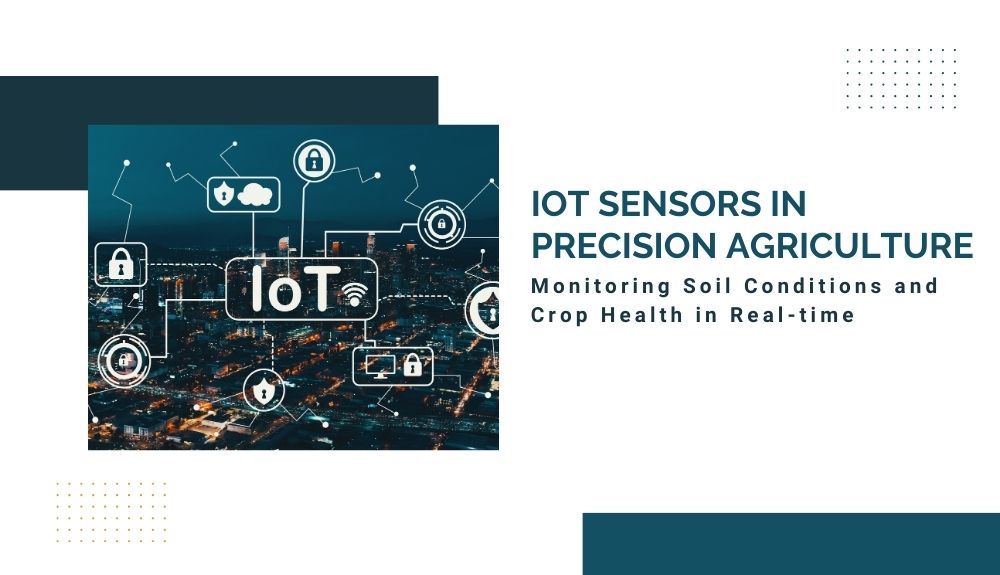Welcome to the innovative world of precision agriculture, where cutting-edge technology is revolutionizing how we monitor soil conditions and crop health in real-time. Imagine a future where farmers can optimize their yields and minimize resource waste with the help of IoT sensors. Let’s dive into how these tiny yet powerful devices are reshaping the agricultural landscape for the better.
The Importance of Monitoring Soil Conditions and Crop Health in Real-time
Imagine having the ability to track and analyze soil conditions and crop health in real-time, allowing farmers to make informed decisions instantly. This technology revolutionizes precision agriculture by providing crucial data for optimizing crop yield and quality. Monitoring soil moisture levels, nutrient content, and temperature can significantly impact crop productivity.
By continuously observing these factors, farmers can proactively address issues such as water stress or nutrient deficiencies before they escalate. Real-time monitoring enables precise irrigation scheduling and fertilizer application tailored to specific plant needs, reducing waste and saving resources.
The integration of IoT sensors in agriculture not only enhances efficiency but also promotes sustainability by minimizing environmental impact. Timely detection of pest infestations or diseases allows for targeted interventions without the need for blanket treatments that harm beneficial organisms or pollinators.
In a rapidly evolving industry where every decision counts, the importance of real-time monitoring cannot be overstated. It empowers growers with actionable insights that translate into healthier crops, increased yields, and ultimately a more sustainable future for agriculture.
Types of IoT Sensors Used in Precision Agriculture

In the realm of precision agriculture, a variety of IoT sensors are utilized to gather crucial data for farmers. Soil moisture sensors help monitor the water content in the soil, ensuring optimal hydration levels for crops. Temperature and humidity sensors provide insights into environmental conditions that impact plant growth.
Additionally, nutrient sensors measure essential elements like nitrogen, phosphorus, and potassium in the soil. These readings enable farmers to adjust fertilization practices accordingly. Furthermore, light sensors track sunlight exposure throughout the day, aiding in determining ideal planting locations.
Another vital type of sensor is the pH sensor which assesses soil acidity or alkalinity levels. This information is invaluable for adjusting soil treatments to maintain optimal pH levels for crop health. Aerial drones equipped with cameras can capture high-resolution images of fields for detailed analysis by farmers and agronomists alike.
How Do These Sensors Work?
Have you ever wondered how IoT sensors actually work in precision agriculture? These innovative devices are designed to collect data from the environment and transmit it wirelessly for analysis.
The sensors are strategically placed in fields to measure various parameters such as soil moisture, temperature, nutrient levels, and even crop health indicators. They use different technologies like infrared, ultrasound, or electrical conductivity to gather this information accurately.
Once the data is collected, it is sent to a central system where it is processed and analyzed in real-time. Farmers can then access this valuable information through mobile apps or web platforms to make informed decisions about irrigation schedules, fertilization plans, pest control measures, and more.
By utilizing these advanced IoT sensors, farmers can optimize their farming practices by ensuring that crops receive the right amount of water and nutrients at the right time. This not only improves yield but also reduces costs and environmental impact associated with traditional agricultural methods.
Benefits of Using IoT Sensors in Precision Agriculture
Imagine having the ability to monitor soil conditions and crop health in real-time, at your fingertips. With IoT sensors in precision agriculture, this futuristic concept is now a reality.
One of the key benefits of using IoT sensors in precision agriculture is the ability to gather data continuously, providing farmers with valuable insights into their fields. By collecting data on moisture levels, nutrient content, temperature variations, and more, farmers can make informed decisions to optimize their crop yields.
IoT sensors also enable farmers to detect early signs of plant diseases or pest infestations. This proactive approach allows for timely interventions, reducing the risk of crop loss and increasing overall productivity.
Furthermore, these sensors help minimize resource wastage by precisely controlling irrigation systems based on real-time data. This not only improves water efficiency but also reduces costs associated with excess fertilizer usage.
In essence, IoT sensors revolutionize traditional farming practices by offering unprecedented visibility and control over agricultural operations.
Future Developments and Potential Impact on the Industry

The future of precision agriculture is set to be revolutionized by advancements in IoT sensors. As technology continues to evolve, we can expect even more sophisticated sensors that provide real-time data on soil conditions and crop health. Imagine a world where farmers can accurately monitor every aspect of their fields with precision and efficiency.
These developments have the potential to significantly impact the agriculture industry by improving productivity, reducing waste, and increasing sustainability. With access to detailed insights from IoT sensors, farmers can make informed decisions that optimize crop growth and minimize environmental impact.
Furthermore, as these technologies become more affordable and accessible, we may see a widespread adoption across different scales of farming operations. From small family farms to large commercial enterprises, IoT sensors will play a crucial role in shaping the future of agriculture.
The integration of IoT sensors in precision agriculture holds immense promise for transforming how we approach farming practices in the years to come.
Conclusion
IoT sensors in precision agriculture are revolutionizing the way farmers monitor soil conditions and crop health in real-time. These advanced technologies provide valuable data that can optimize farming practices, increase yields, reduce costs, and minimize environmental impact. With continuous advancements in sensor technology and data analytics, the future of precision agriculture looks promising. Embracing IoT sensors will undoubtedly play a crucial role in shaping the agricultural industry towards a more efficient and sustainable future.



